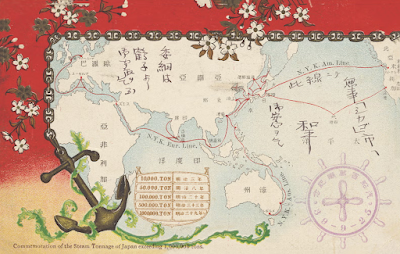Part 3: Before the Fall – Japanese Influence in Malaya and Singapore
A 1890s photograph of Japanese prostitutes in Singapore from the collection of the National Museum of Singapore. https://www.roots.gov.sg/Collection-Landing/listing/1035063
As the Japanese footprint in Southeast Asia grew more respectable on the surface, it also grew more complex. In Johor, where earlier Japanese investments in rubber plantations had started to yield significant profits, the number of Japanese residents multiplied sevenfold between 1911 and 1921.
By the early 1920s, men made up a majority of the population within the Japanese community living in Malaya and the Straits Settlements. As the Japanese population in the region expanded, their communities organized themselves more formally. Schools appeared. Newspapers emerged—some beginning to reflect a growing anti-British sentiment as events in China sharpened Japan’s geopolitical vision.
The Return of Tokugawa
It was into this changed landscape that Marquis Tokugawa returned in May 1929. He was no longer simply a curious aristocrat. Now, he was the senior representative of a large Japanese delegation attending the Fourth Pan Pacific Scientific Congress in Batavia, an organization that was enthusiastically embraced by Japan’s Southern Seas policy.
His party included 11 senior academics, 7 high-ranking government officials, and one military observer—to keep an eye on things. The Japanese were in Southeast Asia not only to study it, but to assess it, chart it, and understand its potential: botanists, hydrographers, surveyors, and many others fanned out across the region.
Tokugawa himself had become a specialist in the region. Fluent in Malay and the proud owner of a vast personal library on Malaya, he likely knew more about the land, its people, and its politics than any other Japanese person. He wasn’t a spy—he would never stoop to such a base profession. But the information he gathered flowed back to Tokyo, where it was studied intently.
The Shadow Network
By the 1930s, the Japanese community in Southeast Asia had evolved into something much more than a collection of expatriates and entrepreneurs. It was, increasingly, a network—one that fed intelligence back to the homeland.
Japan’s Military Affairs Bureau (Unit 82), based in Taiwan, coordinated a growing web of information gathering across the region. And ironically, it was the much-maligned brothel system that played a critical role. These seemingly innocuous businesses provided perfect cover to gather sensitive information: maps, military sites, infrastructure, local knowledge, even potential collaborators.
And Tokugawa, whether knowingly or not, contributed to this broader mission. His research trips across Johor, Singapore, and Java—ostensibly scientific—were invaluable to Japanese policymakers. His close friendship with Sultan Ibrahim of Johor, a fiercely independent ruler whose state occupied a strategic position on the peninsula, only added to his value. Conversations in Tokyo’s imperial botanical laboratory between Tokugawa and the Emperor surely included reports on Malaya’s strategic terrain, its people—and its vulnerabilities.
A Tsunami Approaches
In our previous post, we explored the shifting nature of Japanese engagement with Southeast Asia—how curiosity turned into calculation, and science into strategy. (Read the previous post in the series here).
By the late 1930s, the tides were rising. Tokugawa’s scientific missions, Japanese schools and newspapers, the discreet whispering network of sex workers, and the extensive mapping of the land—all were signs of something bigger on the horizon.
The relationship between Tokugawa and the Sultan of Johor may have begun over tiger hunts and shared intellectual curiosity, but the stakes had changed. A tsunami of attention was building—relentlessly—at the tip of the Malay Peninsula.
And the world would soon feel its impact.
Coming up next: Sultan Ibrahim visited Japan in 1934: who was to know that just years later Asia would descend into a war which pitched the British Empire against the Empire of Japan with the Sultan caught uncomfortably in the middle of it all? In the next post we discover how a friendship that started more than a decade earlier became a pivot point in the broader story of Southeast Asia’s–and Tyersall’s–darkest hour.







Comments
Post a Comment